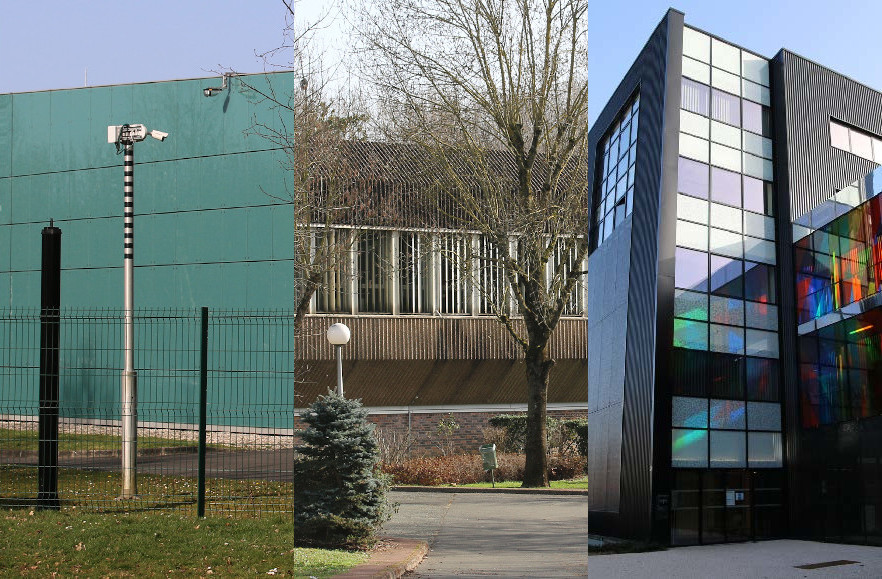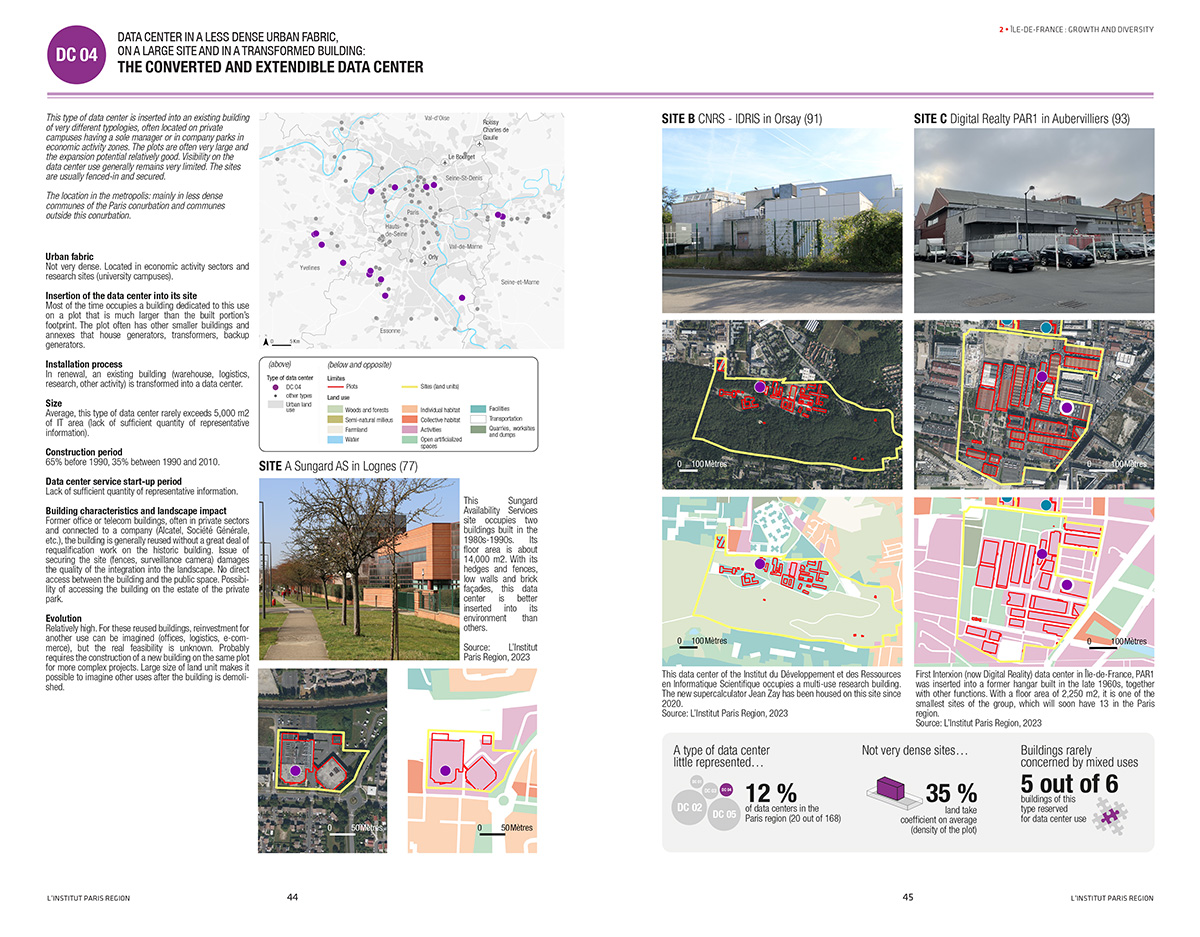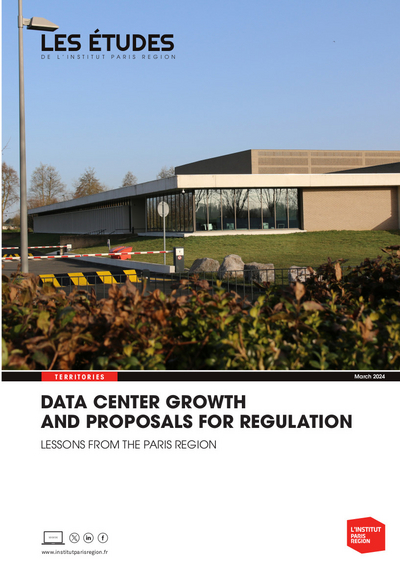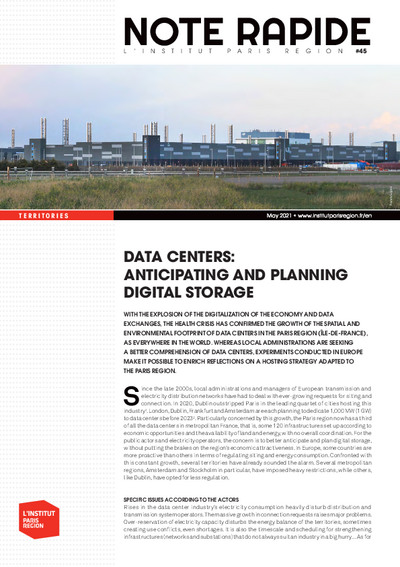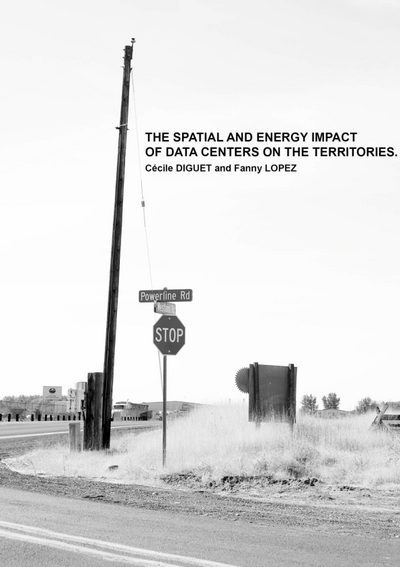Data Center Growth and Proposals for Regulation
Data centers have become an infrastructure that is consubstantial with digital uses over about the last 15 years, notably boosted by the explosion of virtualization (clouds, platforms). However, they remain almost invisible objects for the general public, and relatively opaque in the eyes of public actors. In Île-de-France, as in other European and world metropolises, data centers have now become a political policy and local debate subject, in liaison with the awareness of the digital’s environmental impacts, and the necessary road to be taken toward sobriety.
The spectacular development of the data center market that has been observed since the early 2000s is the result of the digitalization of every human activity (economy, administration, health, education, culture, leisure, etc.). Throughout the world, the number of data centers has been continuously increasing. The Île-de-France region is an attractive territory for hosting data centers in France and one of the most attractive in Europe. Over the last two decades, the development of data centers has accelerated in the region to reach a total number of over 160 in 2023.
In Île-de-France, there is a large variety of host territories, forms, ages and types of data centers. Source : L’Institut Paris Region, 2023.
This study makes it possible to better know these infrastructures, which are recent in the history and urbanism of the Paris region. By analyzing all the existing data centers, L’Institut Paris Region has observed a certain number of technical, construction, security and programming characteristics that are shared by the data centers; others distinguishing them as a result of a considerable diversity of sizes, forms, function, technologies and operating modalities. In order to better understand their siting modalities and the resulting spatial impacts, a typology based on exclusively spatial criteria is proposed in Part 2 of this work. Consequently, five types of data centers (“infiltrated data center,” “converted data center in an activity zone,” “new and optimized data center,” “converted and extendible data center” and “new data center on the metropolitan outskirts”) have been identified. They are illustrated by concrete examples.
Example of a typical sheet for a “converted and extendible data center” that is one of the 5 types of data centers identified by L’Institut Paris Region in this report. Source : L’Institut Paris Region, 2023.
According to our observations of current development trends, the data center market is tending to accelerate with the risk of even soaring over the next few years, which is confirmed by the projections of the ADEME (French Environmental and Energy Management Agency) and the ARCEP (French Regulatory Authority for Electronic and Postal Communications), as well the knowledge of projects to come by electricity operators and the MRAe d’Île-de-France. Certain types of data centers have developed more heavily than others and in the upcoming years, growth should continue in certain territories of the Paris region and slow down in others. Consequently, requests will probably increase, in number but especially in installed electrical power and floor area, in the territories where favorable local political contexts and large available plots exist in new economic activity sites to host the emerging model of cloud data centers of large dimensions notably operated by Amazon, Microsoft and Google. Requests will also undoubtedly continue where the urbanization potential has still not been reached and in aging company parks and/or abandoned buildings and wasteland. Finally, territories are also concerned in which the local urban planning documents permit such installations and in which there are no particular curbs in terms of electricity or internet network availability. On the other hand, growth should slow down where dense territories and those in full urban transformation are faced with increasingly great real estate development pressure and where there is a need for reducing pollution and/or urban dissections for the population at the same time as improving their living environment (by creating green spaces, public facilities, etc.). This deceleration would also seem to concern the sectors where there is a reticence and/or a local mobilization against land artificialization or in favor of an alternative project in a denser milieu and in sectors where there is local tension on the electricity transmission and distribution networks.
Territorial breakdown of data centers.
The growth of the data center market in Île-de-France could have a considerable impact on electricity consumption and the robustness of the electricity network, in a context of increasing needs, notably linked to the electrification of mobilities, and uncertainty on production capacities. It will also have repercussions on land in the Paris region (real estate development pressure on already urbanized land) and the dynamics of urban expansion and land artificialization of farmland, even forests, and more broadly on natural resources (including on water and materials). The global impact of risks and pollution produced by data centers on human health remains to be studied (noise for example), but certain aspects are already well-known, such as the risk of fire or the contribution to the overheating of cities (waste heat released into the environment and the urban heat island effect). The consideration of these subjects is therefore not necessary solely for the new projects, but also concerns existing data centers.
The thematic issues that permit public actors to better apprehend these issues linked to this growth of data centers are sketched out in this study. The following issues are discussed:
- Issue 1: Land use sobriety and preservation of open ground;
- Issue 2: Urban integration;
- Issue 3: Prevention of risks and pollution;
- Issue 4: Sustainable management of energy;
- Issue 5: Sustainable management of other resources.
Sometimes, there are already solutions (technical, spatial, construction, etc.), here and elsewhere, but they often remain little-known due to a lack of knowledge-sharing. In other cases, new ways of doing are still to be invented. Taking these issues and their impact into account is a first step, making it possible, tomorrow, for public and private actors to find responses adapted to each territory. It must not be forgotten that the financial resources of the data center actors and their appetite for innovation are greater than those of other activities. Shouldn’t they become a lever to design flagship projects in terms of energy sobriety and efficacy and in water and materials, but also in terms of architectural quality and urban and landscape integration?
Part 4 of this study offers a list of precise proposals, based on the criteria and issues cited above in other parts of the report. The aim of these proposals is to accompany public administrations in the hosting of data centers in Île-de-France, making sure to maximize the positive feedback of their development and minimize the negative impacts. This concerns new installations and existing data centers, on which many improvements on landscape and urban integration and on architectural quality can still be made.
The aim of our proposals is first of all to be discussed with the identified public and parapublic actors to comprise the first core of the “collective of data center public and parapublic actors in Île-de-France,” which is one of our principal recommendations. Part 4 of this report also includes a first contribution to the creation of a shared analysis grid of the data center projects between the public and parapublic actors in Île-de-France and that includes stress on the existing regulatory frameworks, environmental procedures, possible supervision tools, and so on. All these elements aim at guiding the collective construction of an optimal data center integration strategy in the different territories of the Paris region.■
This study is linked to the following theme :
Urban planning
